
|
Adjacent Segment Disease (a.k.a. Fusion Disease) |
|
The phenomenon of accelerated adjacent segment degeneration is still debated by spine specialists worldwide. We are of the belief that it does exist. This phenomenon can best be described by the fact that fusing one or two levels will lead to increased stress at the remaining adjacent levels, the remaining motion segments will have to take up and accommodate the remaining motion of the spine, these adjacent levels will then tend to age and degenerate faster because of the resultant increased load and stress. On a more controversial note, many spinal arthroplasty surgeons propose that by performing a disc replacement and restoring motion to a diseased spinal segment, this reconstructed spinal motion segment will offload the stress to the adjacent levels and actually lower the risk of onset of accelerated adjacent segment degeneration. The spine is a mobile structure and motion will occur at the places of least resistance and stiffness, if motion can be restored by a disc replacement then this will lead to reduced stresses at other more degenerated parts of the spine.
An illustrated example of accelerated adjacent level degeneration. One such patient is shown courtesy of Dr. Raymond Yip. |
|
Female early to mid fifties, main complaint of difficulty walking with upper and lower limb numbness Clinical Examination Hyperreflexia and upper motor neurone signs JOA myelopathy score 8/17
MRI Disc Prolapse C3-4 August 2003 Surgery for C3-4 ACDF (Anterior Cervical Discectomy and Fusion) Post operatively symptoms much improved with JOA score 16/17
|
|
ADJACENT SEGMENT DEGENERATION– Case Illustration |
|
Well until late 2005 Developed progressively increasing numbness of upper and lower limbs again. JOA score repeated now 11.5/17 Imaging studies arranged: Radiographs solid fusion at C3-4 MRI July 2006 Adjacent level disc disease with disc prolapse @ C4-5. |
|
August 2006 Surgery for decompression and disc replacement performed. Complete symptom relief. Discharged home 1 day after surgery |
|
C4-5 JULY 2006 |
|
PROGRESS |
|
Copyright © 2008 Spine Care Hong Kong |
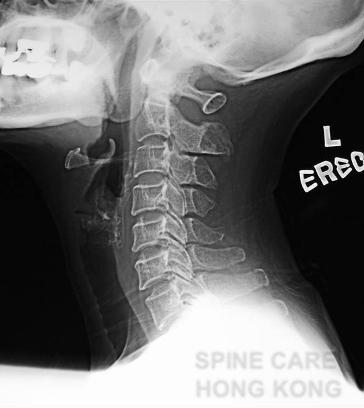
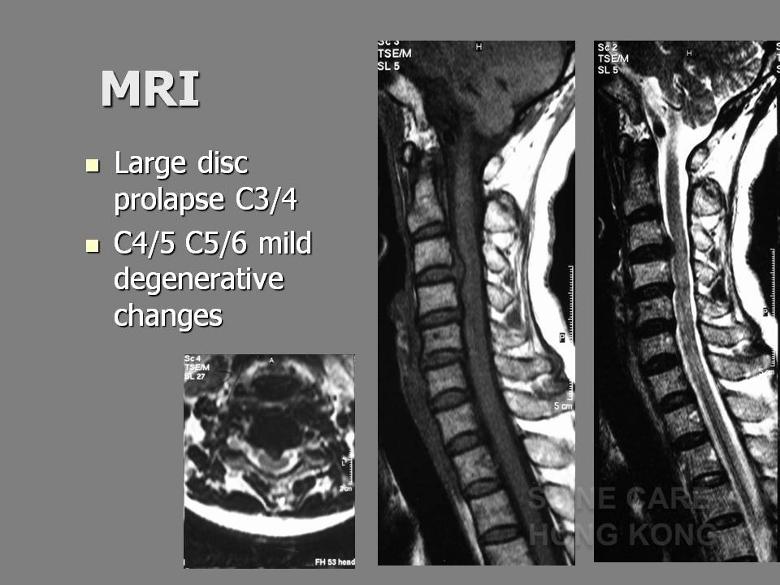
|
Pre Operative July 2003 |
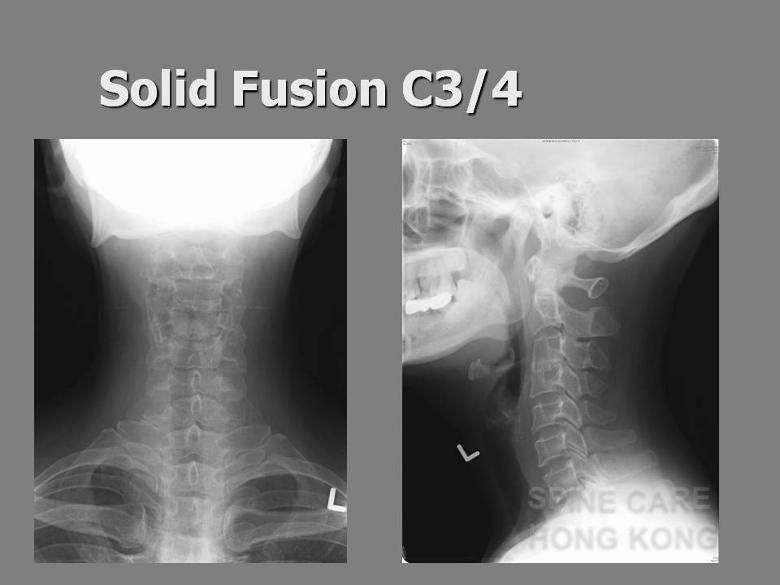
|
JULY 2006 solid fusion C3-4 |
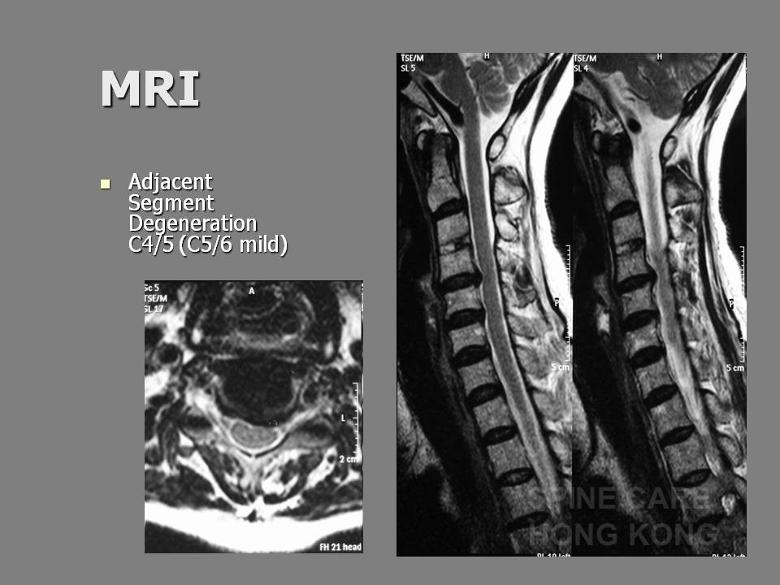
|
JULY 2006 C3-4 decompressed New disc prolapsed at C4-5 |
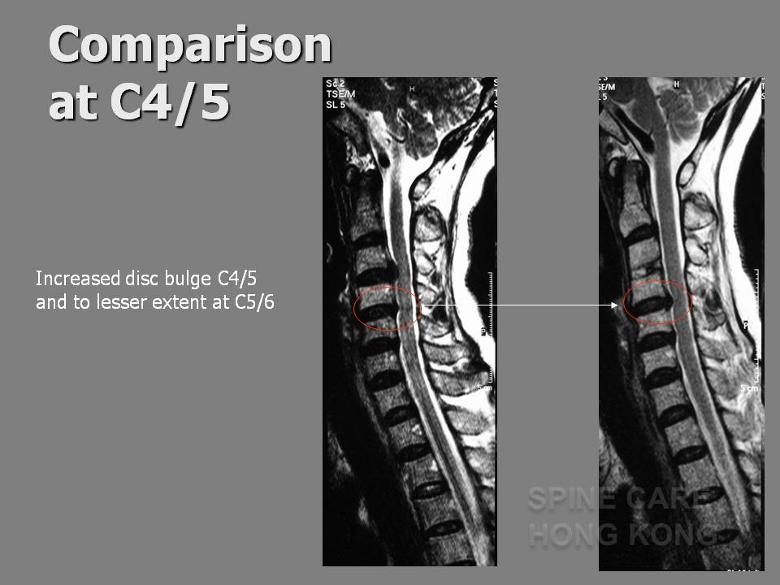
|
September 2006 |
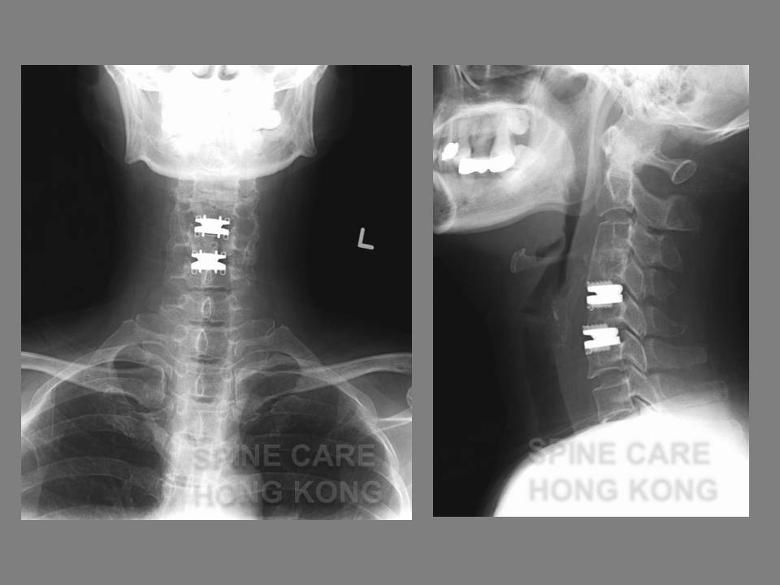
|
Pre Operative July 2003 |

|
SPINE CARE HONG KONG |
|
ACCURATE DIAGNOSIS, STRUCTURED TREATMENT |

